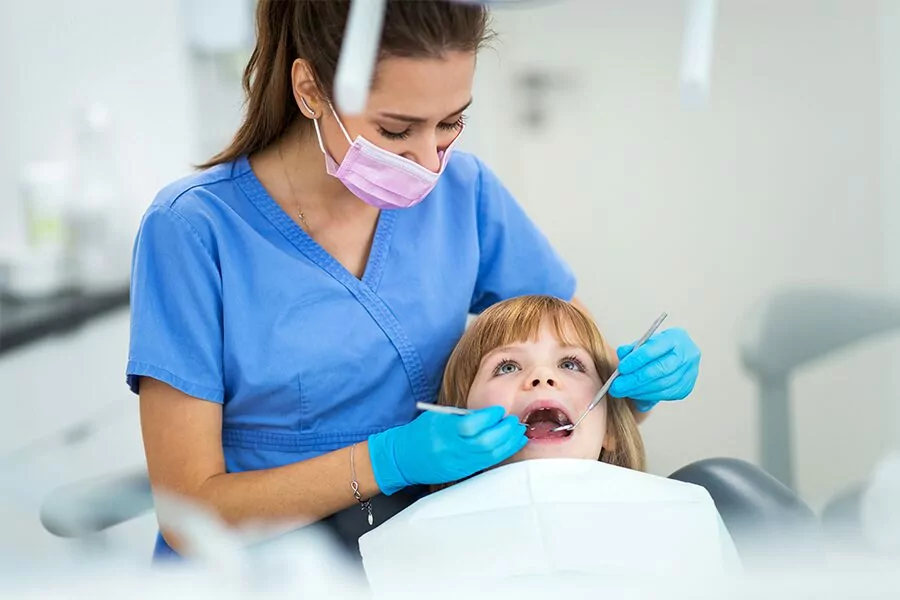Understanding How Dentists Attend To Common Oral Health Issues
Dental professionals employ a diverse technique to manage usual oral health problems, making use of analysis techniques such as visual examinations and X-rays to detect cavities, gum tissue illness, and tooth level of sensitivity. Highlighting preventive care, dental professionals also provide customized guidance on preserving oral health. Exactly how precisely do these methods merge to make certain ideal dental wellness?
Detecting Tooth Cavities
Diagnosing dental caries involves a precise assessment of the teeth, using both aesthetic evaluations and progressed analysis tools. Dental experts begin with a thorough visual analysis, looking for discoloration, noticeable holes, or various other indications of decay on tooth surfaces. They might make use of an oral mirror and traveler to discover soft spots or areas that may suggest demineralization.
In addition to aesthetic evaluations, dental practitioners frequently use sophisticated diagnostic devices to boost precision. Digital radiographs, or X-rays, are basic in identifying dental caries that are not noticeable to the naked eye, such as those between teeth or under existing oral job. These photos offer in-depth understandings right into the level and area of decay, enabling accurate therapy planning.
Some specialists likewise make use of laser fluorescence tools, which identify modifications in tooth composition by determining how much light is reflected back from the tooth surface area. This approach can recognize early-stage dental caries that may not yet be noticeable or detectable with typical ways. Normal dental check-ups and using these diagnostic techniques are vital in catching cavities early, consequently preventing more decay and maintaining overall dental health.
Treating Periodontal Illness
While discovering dental caries is a vital facet of oral health, it is just as important to attend to gum tissue disease, another widespread oral problem. Gum condition, or periodontal disease, is mainly brought on by the buildup of plaque, a sticky movie of bacteria on the teeth and gums. If neglected, it can progress from gingivitis, a light type, to periodontitis, a more serious condition that can lead to missing teeth and systemic health concerns.
The preliminary therapy for periodontal condition usually includes non-surgical approaches. Scaling and origin planing, a deep cleaning treatment, is commonly utilized to remove plaque and tartar from underneath the gumline. Antibacterial drugs may likewise be prescribed to minimize microbial tons.
For innovative situations, medical interventions could be necessary. Treatments such as flap surgery, where periodontals are raised back to remove tartar down payments, or bone and cells grafts, which aim to regrow broken areas, are utilized to recover dental health and wellness.
Recurring maintenance is important in taking care of gum illness. Dental professionals advise normal dental examinations, specialist cleanings, and thorough home treatment techniques, including brushing, flossing, and utilizing disinfectant mouthwash. Early detection and constant administration are crucial to avoiding the progression of this usual yet serious dental condition.
Handling Foul Breath
Foul breath, additionally called halitosis, frequently affects individuals and can be a source of considerable social discomfort and stress and anxiety. Dental practitioners play a crucial role in diagnosing and managing this condition by recognizing underlying reasons and suggesting proper therapies.
The etiology of bad breath is multifactorial, with bad oral hygiene being a primary contributor. Microbial plaque buildup on the teeth and tongue, food fragments, and completely dry mouth prevail wrongdoers. dentist eugene or. Dental professionals typically begin management by advising patients on reliable dental hygiene practices, consisting of normal brushing, flossing, and using antiseptic mouth washes

In addition, lifestyle and dietary factors, such as tobacco use and usage of specific foods, might aggravate negative breath. Dentists provide customized guidance on dietary adjustments and cessation of dangerous routines. Collaboration with various other medical care companies might also be called for if systemic problems, such as stomach problems or respiratory system infections, are presumed contributors to halitosis.
Dealing With Tooth Sensitivity
Resolving dental health and wellness prolongs past taking care of foul-smelling breath to consist of problems like tooth sensitivity, which can significantly influence every day life. Tooth level of sensitivity, defined by discomfort or discomfort in action to stimuli such as hot, cool, pleasant, or acidic foods and beverages, frequently arises from revealed dentin or receding gums. Dental practitioners use a diverse approach to take care of and alleviate this condition.
First, a detailed assessment is vital to identify the underlying reason, which may vary from enamel erosion to gingival economic crisis. Based on the medical diagnosis, treatment can involve desensitizing representatives like fluoride gels or varnishes, which strengthen tooth enamel and lower sensitivity. In addition, dental experts might suggest particularly developed tooth paste for sensitive teeth, containing substances like potassium nitrate or stannous fluoride to block discomfort signals.

Preventive Dental Care
Recognizing the relevance of precautionary oral care is essential for keeping long-lasting dental health and wellness. Preventive treatment encompasses a series of practices targeted at avoiding the start of dental conditions and conditions. Routine oral examinations, typically suggested every 6 months, are essential to this strategy. During these brows through, dental experts perform complete cleansings, eliminating plaque and tartar that are past the reach of routine brushing and flossing.
In addition, preventative care consists of the application of fluoride therapies and oral sealants, which offer an additional layer of defense versus dental cavity. Fluoride strengthens the enamel, making it much more immune to acid assaults, while sealers work as an obstacle on the chewing surfaces of the back teeth, where decay frequently begins.
Education is a significant element of preventive oral treatment. Dental experts and hygienists inform patients on appropriate cleaning and flossing methods, the value of a balanced diet regimen, and the impact of way of life options such as smoking cigarettes and sugar intake on oral wellness.
Conclusion

Dental experts use a diverse technique to manage common dental wellness issues, utilizing diagnostic methods such as aesthetic inspections and X-rays to discover dental caries, gum tissue disease, and tooth sensitivity.While finding dental caries is a crucial element of dental wellness, it is just as important to address gum illness, one more common dental problem. eugene dentist. Dentists may perform a comprehensive oral examination to identify potential issues such as periodontal disease, oral cavities, or oral infections. By resolving tooth level of sensitivity thoroughly, dental practitioners help clients achieve better comfort and preserve optimal oral health
Stressing preventative treatment and customized recommendations, dental professionals play a vital duty in keeping ideal oral health and mitigating lifestyle-related oral issues.